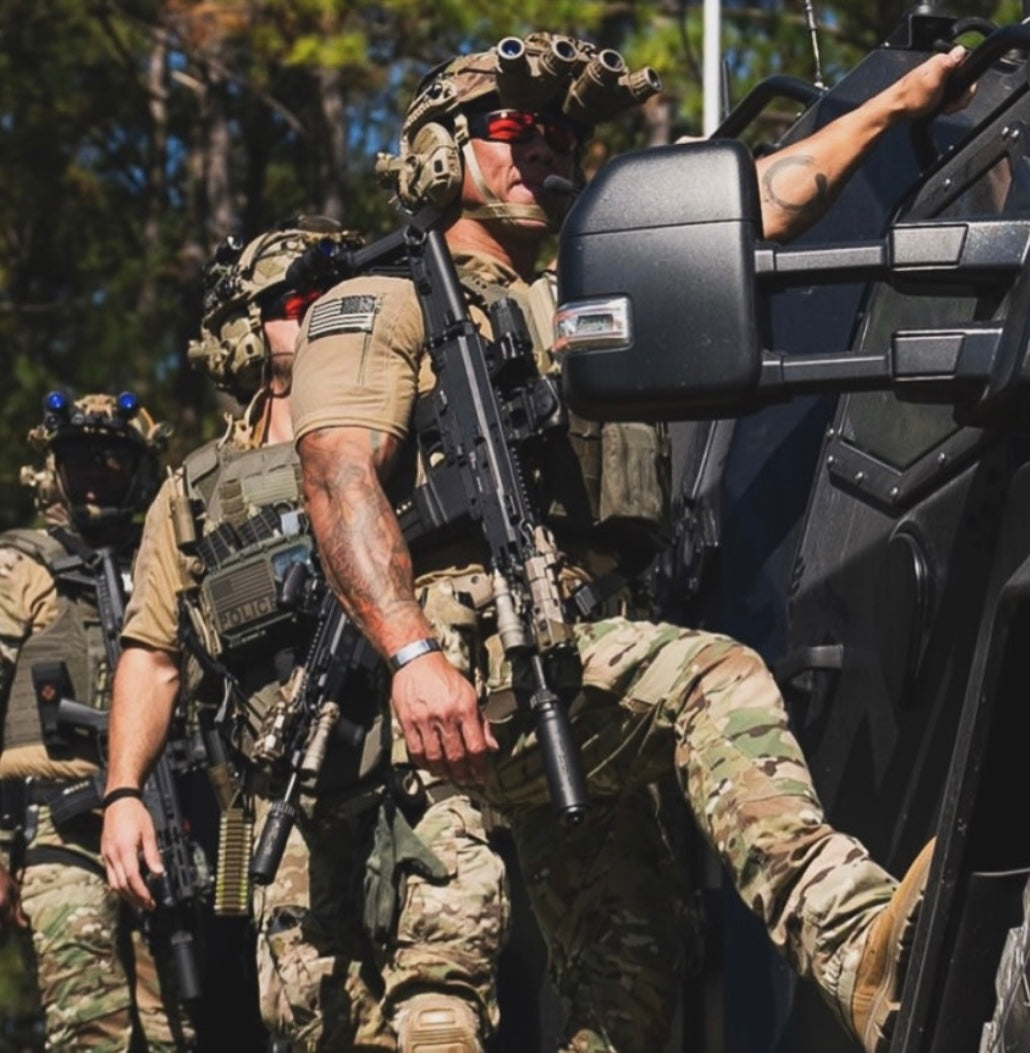Excerpt: Answering the Call: Proper Physical Training for Police and Military in the in the 21st Century
Pages 28-29
This is highly dependent on the unit you are in, seniority, etc. From my experience when you were the new guy despite being selected you were required to attend Ranger school and pass otherwise you could never take leadership or specialty assignments. You were always regarded as “less than” until this was accomplished. Basically your career never started until getting through this gate.
Due to this dynamic, you were always subject to the old standard Army PT test. So the push ups, sit ups, 2 mile run, and later a 5 mile run. Without notice you could be graded on it haphazardly and literally at any time. Which makes it challenging to have a hard workout an evening prior to a work day when you didn’t know if the following morning you’d have to run 5 miles as fast as possible while competing against your peers.
What I did and what I wish I did are two different things. I was younger then so burning the candle at both ends still worked…for a while… but in the end it wasn’t until deployments where believe it or not you had more free time to train and rest (it was kind of a vacation from the typical training cycle) which was when I made the best progress of my time there. I later returned to the states and graduated from Ranger School.
Principles
I think the typical rules apply while in the training cycle. Three days a week lifting, all total body, with one day that is a little heavier but not training on the nerve, a “medium” day or density style conditioning day, and then a volume day at the end of the week consisting of some unilateral movements both upper and lower body. All of these workouts (especially as one ages in the tactical world) should be preceded with a ground based warm up, the rolling, the rocking, the thoracic mobility work, ASLR (Gray Cook), and then to standing movement. Move into a track style warm up and then get to the warm up sets.
When I look at a foundational phase, I think strength and aerobic development is paramount. Most of the conditioning methods I have used that have really worked for me and others I have trained are variations in Joel Jamieson’s conditioning methods.
Joel’s book, The Ultimate Guide to MMA Conditioning, is in my opinion one of the best books on conditioning and most practical for 99% of the population. As stated before, I also contacted Craig Weller, who is an excellent strength coach who walked me through my military prep. I just wasn’t confident in my own programming (knowing how to program for a college football player only gets you so far in the tactical world) and did not know where to start at that time in my life. His assistance was crucial, and helped me see the value in how to apply some of Joel’s work. I did whatever he told me to do and it was helpful and I learned a lot. Some concepts worked for me while others did not.
I was really intimidated joining with an option 40 contract and without his help I probably would have spent the whole time just smashing myself with crossfit style workouts, which only works for so long. Sometimes we our own worst clients.
This is a general outline and I am just plugging stuff in to make this read easier. Percentages are just GUIDELINES. I don’t think they are perfect by any stretch but for hard chargers I think it helps to keep them under control. Using training maxes or 3RMs as the basis for these percentages is also helpful, as this avoids the ego, and chalk sniffing preworkout infused terrible form PRs as the basis for their loads during the cycle.
This is a GENERAL outline, and intended for the individual who is established and not worried about the random 4 am PT test, and looking to develop some strength and aerobic conditioning. Pull- ups can be added but as one is more established and older I feel like elbow pain (or like Dan John’s coined term: MAPS- Middle Aged Pull Up Syndrome) becomes an issue as it turns into an ego lift in military cultures but certainly can be added.
Below you will see the outline of the overall schedule for the month. Note: If your schedule throws this off, don’t worry about it. If this takes you six weeks to do instead of four, you are going to be just fine. Just get the work in, listen to your body, and if you spent the night out in the woods until 2 AM there is nothing wrong with moving the recovery day around to give you the breathing room you’ll need to continue long term progress.
The entire template is several pages and broken down in the book. Much of it can be found in this longer article I wrote over three years ago.




